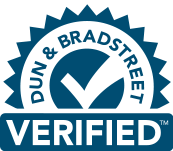Rapid prototype machining is the modern phenomenon of transforming digital designs into 3D objects to produce machine parts, models and prototypes. The prototypes are generally created for testing purposes but they also hold importance in the product development lifecycle.
Technically, a rapid metal prototyping machine fabricates a product model quite faster than normal prototyping process. This process is also known as layered manufacturing or computer-automated manufacturing.
Rapid prototyping is an additive process which uses 3D model data where materials are kept layer-wise to create an object. Metal prototype manufacturers use major materials like adhesives, thermoplastics, and photopolymers in the above technique.
The additive manufacturing also called as 3D printing service, creates three-dimensional objects from a digital file by using an additive method. Here, successive layers of a material are laid down until a final product is prepared. This makes it easy to create complex shapes with fewer materials.
Techniques Used in a Rapid Metal Prototyping
- Stereolithography (SLA)
Also known as SLA, it is the first rapid prototyping machine technique which uses a light-sensitive liquid polymer. This method allows selective polymerization of a photosensitive resin through ultraviolet light where a thin layer of liquid plastic (polymer) is exposed on a perforated platform. Then, an ultraviolet laser beam is focused on the top layer of the platform to print the product pattern.
SLA 3D printing is believed to achieve accurate results in industries with precision with a good surface finish. It also supports thin walls and high details.
- Selective Laser Sintering (SLS)
SLS printing services method uses a high-powered laser beam to melt and fuse powdered material which has been spread on a layer. Thereafter, the powdered material is metered inaccurate amounts and allowed to spread on the table by a counter-rotating roller. The laser beam is used to fuse the powder via cross-hatching motion within the section boundary.
The major benefit of SLS printing machine process is that the fabricated prototypes are porous which imparts their strength and surface finish. It uses minimal support structures with no post-curing.
- PolyJet Technology
It is the efficient 3D printing technology to produce smooth tooling, parts, and prototypes. It is capable of generating thin walls and complex geometries with microscopic layer resolution and precise accuracy up to 0.1 mm.
The benefits of PolyJet technology is that it creates detailed and furnished prototypes to convey final-product aesthetics. It has the capability to create accurate molds, fixtures, jigspost-curing, and related manufacturing tools. It combines together a wide range of colors and materials into a single unit and builds complex shapes with delicate features.
The rapid prototype machining services at Sphinx Worldbiz works effectively to create a prototype for use with multiple advantages. These are improved quality, reduced cost, maximized turnaround time and in turn boosted quality control. You can contact our team to improve your rapid prototyping processes.
 +91-120-4736400
+91-120-4736400 info@sphinxworldbiz.com
info@sphinxworldbiz.com
















